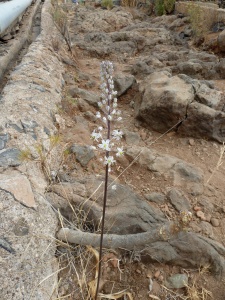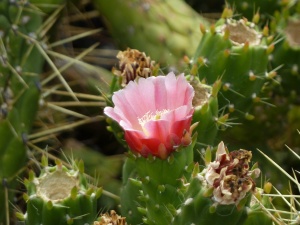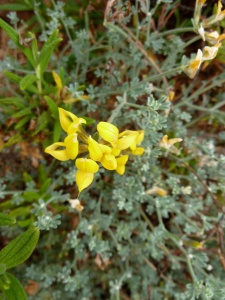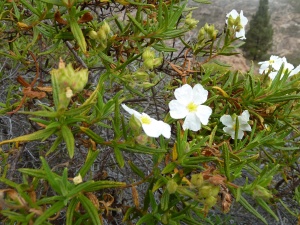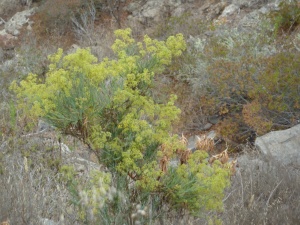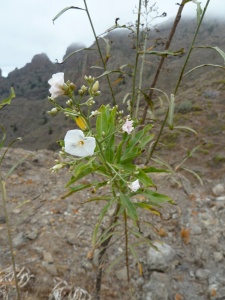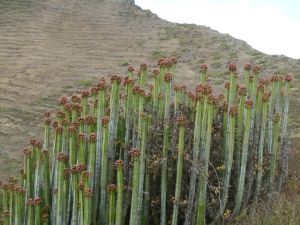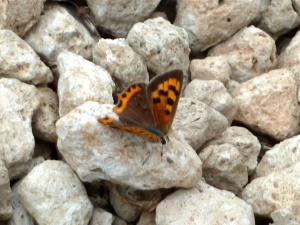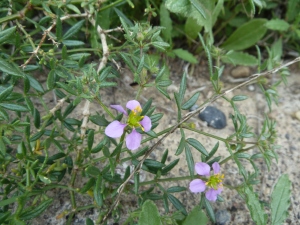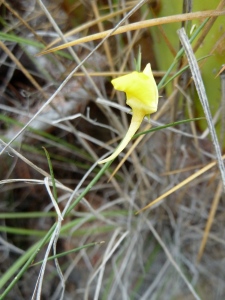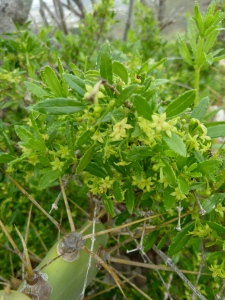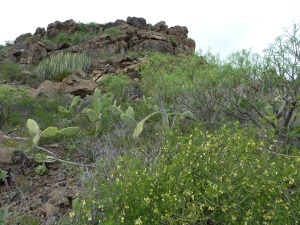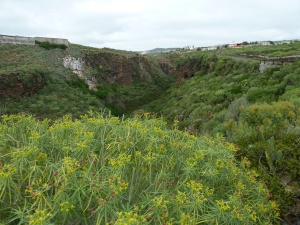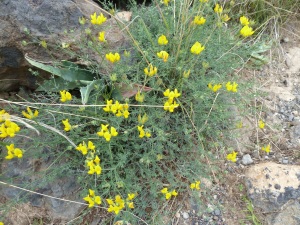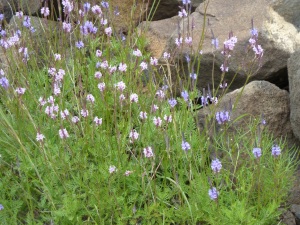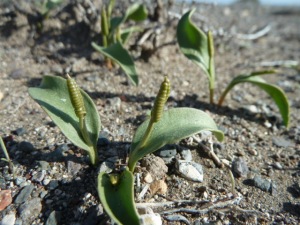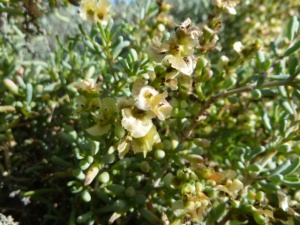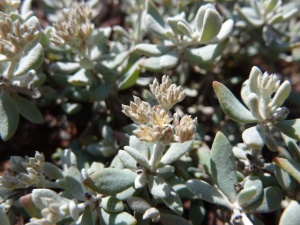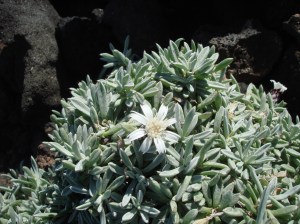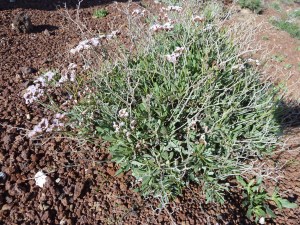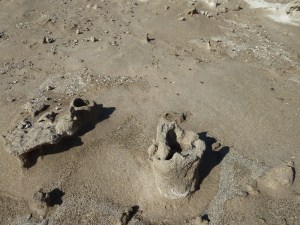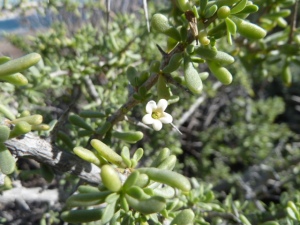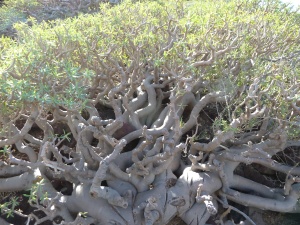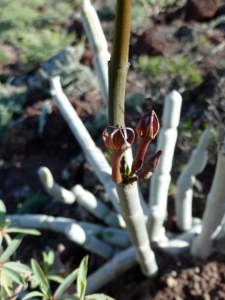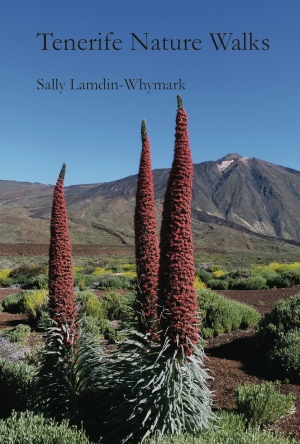Blog Archives
Revisiting the Arona walk on Camino del Topo and Camino de Suárez
I described this walk after we had done it in September 2013 in a previous post entitled “A delightful walk from Arona”. I mentioned then that we did not often walk it in summer due to the lack of shade. However, this year July had a lot of cloudy weather, which continued into early August and we chose to do this walk on a cloudy day, the 2nd August. In fact when we reached the highest point we were in the cloud briefly, and had no views to the coast from the threshing floor between Roque Imoque and Roque de los Brezos, but we were below the cloud most of the time.
I am just adding a few pictures of the flowers we saw at this time of year. Some are typical of the time of year, others are normally over by this time of year, but the wet winter, coupled with the recent humid and cooler weather has extended the flowering period.
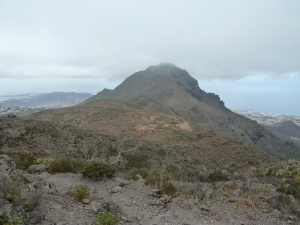
A view from the north side of Roque del Conde where the flat top is not so notable as from the south or west
Aldea Blanca to San Miguel walk revisited
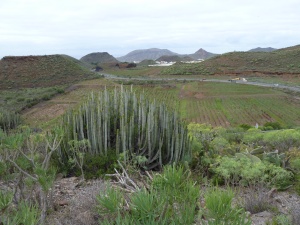
A view towards Buzanada and Mt Guaza with Canary spurge (Cardón) (Euphorbia canariensis) in the foreground
The circular walk from Aldea Blanca to San Miguel and back is Walk 13 in the book ‘Tenerife Nature Walks’ so I will not describe the walk here, just add some more pictures of the flowers and scenery we saw when we walked it on the 15th January. Hope you enjoy them.
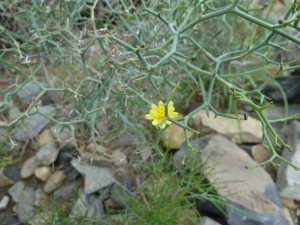
Chicken wire plant, (Aulaga), (Launaea arborescens), a prickly low bush of coastal areas and lower slopes.
A short circular walk from Arico Nuevo
We started this walk from the square in Arico Nuevo, where there are signboards about walks going in every direction. We took the street opposite the church, walking in the direction of Villa de Arico. We began with a gentle downhill walk on a road passing houses, until the tarmac suddenly ended and we continued on a track. We had a yellow/white waymark to confirm it was a path and continued downhill, soon overlooking an attractive barranco, the Barranco Lere or de los Caballos. This is the same ravine followed in the Poris de Abona to Arico Nuevo walk, but a bit higher up. Despite the long spell of dry warm weather, the barranco looked surprisingly green and had a fair selection of plants, although few are in flower at the moment.
The path as we climbed out of the ravine had a few flowers bravely blooming in the damper spots, including Canary lavender (Lavandula canariensis), the local Marguerite (Argyranthemum frutescens), Canary madder (Rubia fruticosa), the local Bird’s foot trefoil (Lotus sessilifolius) and the ubiquitous Pitch plant (Psoralea bituminosa).
The path finally joined a tarmac road, and although the yellow/white marked trail went left, we went right up the road to join the main road. We had to walk along the road for some couple of hundred metres till we had crossed the barranco again on the road bridge. Then immediately after the bridge a path went left to go along the right side of the barranco, and then climb a rocky surface to a wooden cross. A short walk beyond this we joined a tarmac country road, continued across it past a house with barking dogs, and then joined a white pumice track going to the left, which continued between the barranco and some terraces, climbing gently and bending round to the right. On the way I noticed the Vinegrera (Rumex lunaria) bushes were in flower. This common shrub is widely used for animal fodder but most of the year it is difficult to relate it to the dock family, but when it is in flower the relationship is obvious. Eventually, about 1.25 hours from the start in Arico Nuevo, we arrived at the top of the village of La Sabinita. We went right, again following yellow/white markers, down a wide street, left at the little church and arrived at the plaza with several benches. There we ate our picnic lunch before continuing following the yellow/white markers down through the rest of the village. As we left the village we kept to the left of the road, to follow the yellow/white markers onto a path which cuts off a loop in the road by going straight down to the village of La Degollada. Walking straight through this village, and straight on down a cobbled street, following the yellow/white markers, we arrived again at the square in Arico Nuevo.
The walk was 6.8km long and took us 2.25hrs, with a climb of around 350m. I have put the GPS track on Wikiloc, where you can view it on a map, and download it:
